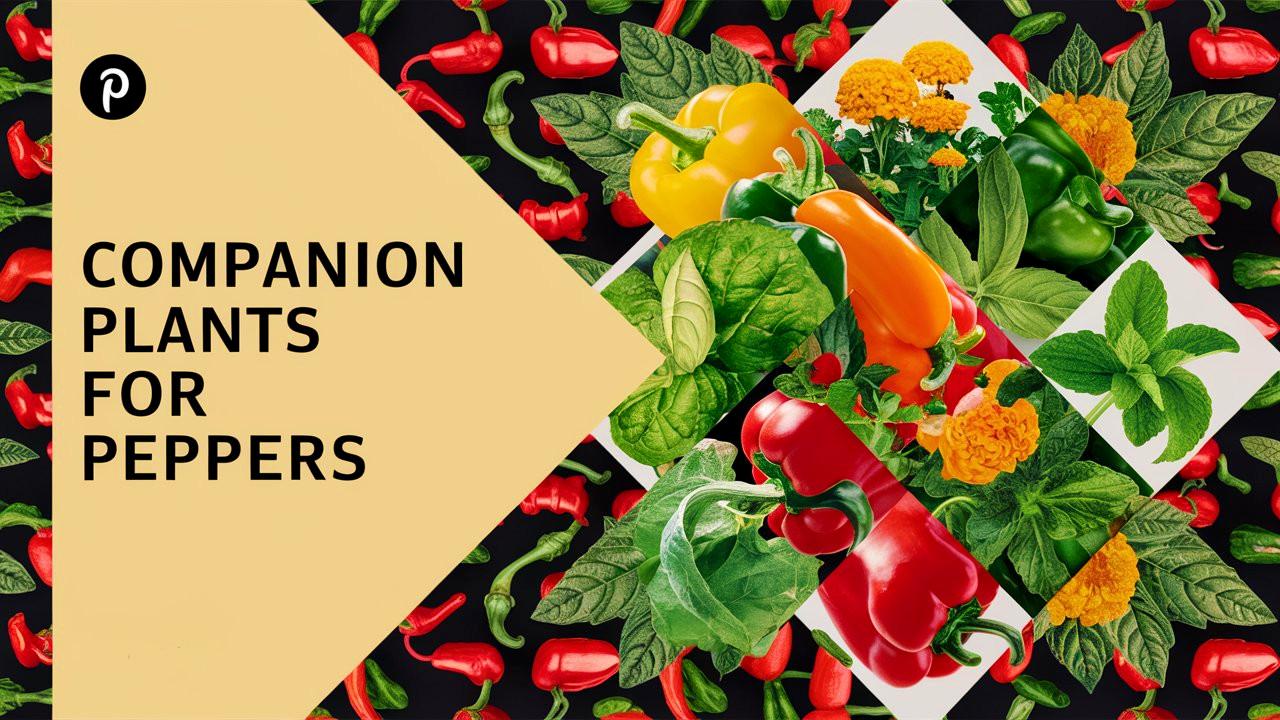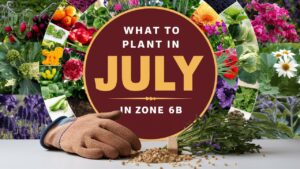Peppers are a beloved garden staple known for their vibrant colors, diverse flavors, and versatility in the kitchen. Whether you’re growing sweet bell peppers or fiery jalapeños, the right companion plants can enhance their growth, improve yields, and even help manage pests.
This guide explores the best fruits, vegetables, herbs, and flowers to grow alongside peppers, emphasizing the benefits of each pairing, as well as plants you should avoid.
Fruits and Vegetables to Grow Alongside Peppers
Tomatoes
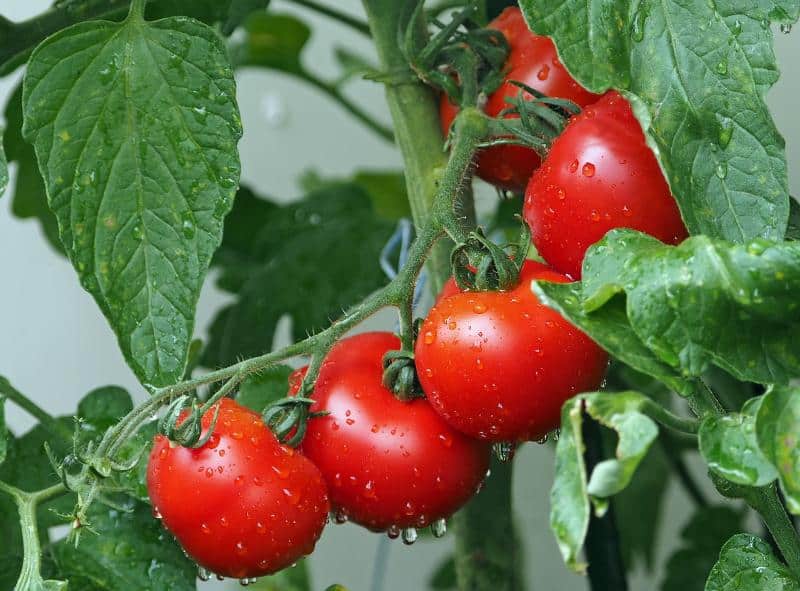
Tomatoes are perhaps one of the best-known companions for peppers. Both plants thrive in similar growing conditions, requiring full sun and well-drained soil. When grown together, tomatoes and peppers can improve each other’s pest resistance, as both deter aphids and other harmful insects. Additionally, the deep root systems of tomatoes can help in maximizing nutrient uptake, while pepper plants can provide shade for tomato roots during the hottest parts of summer.
Eggplant
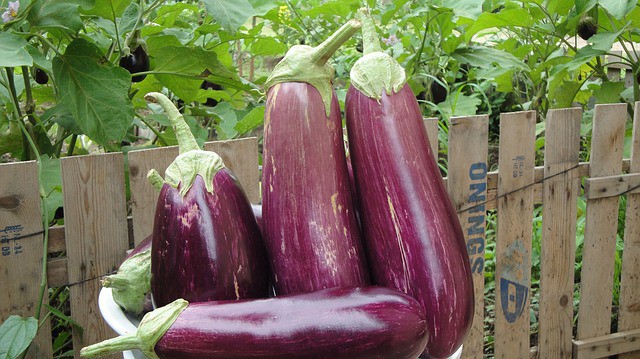
Eggplant, like peppers, belongs to the Solanaceae family, which means they share similar requirements in terms of sunlight and soil conditions. Growing eggplant with peppers not only utilizes vertical garden space effectively but also helps with pollination. The two plants attract similar pollinators, enhancing the overall yield. Additionally, planting these vegetables together can help deter common pests like aphids and spider mites.
Okra
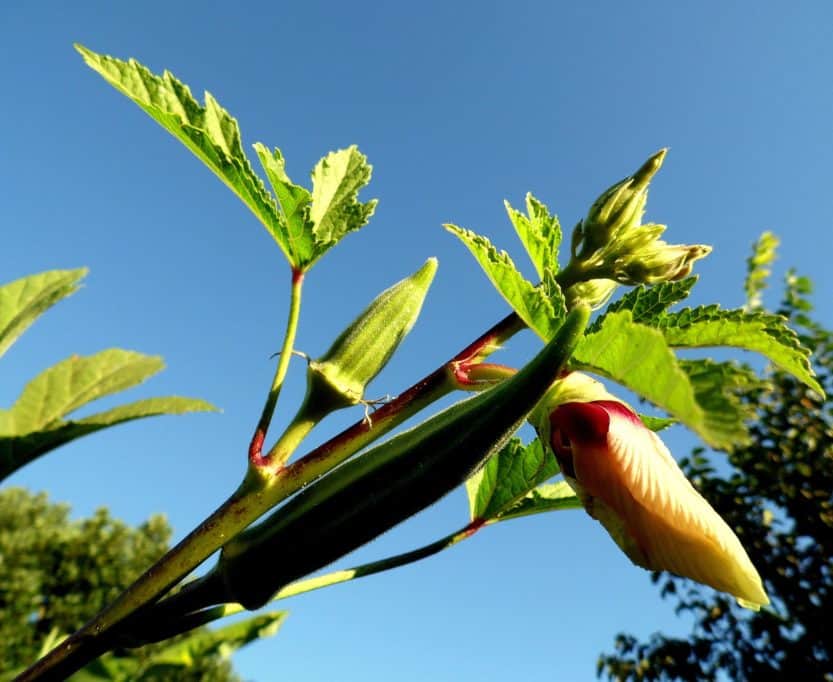
Okra’s tall growth habit provides natural shade for pepper plants during the hottest parts of the day, which can be beneficial in preventing pepper plants from wilting in high temperatures. Moreover, okra is known to improve soil structure and moisture retention. This companionship can lead to a healthier garden ecosystem, as okra plants help attract beneficial insects that predate on common pests.
Corn
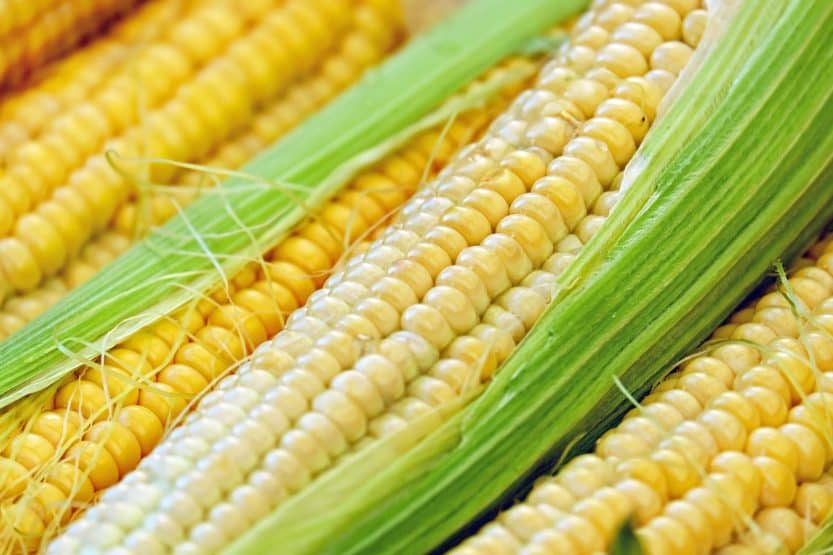
Corn acts as a natural trellis for certain types of peppers, especially the smaller varieties. This vertical growth can help in maximizing garden space while providing a microclimate that benefits both plants. Additionally, corn and peppers have different root depths. Corn roots tend to grow deep, allowing peppers to utilize the upper soil layer for nutrients, thereby reducing competition. Furthermore, corn’s height can provide some degree of wind protection for more delicate pepper plants.
Beans
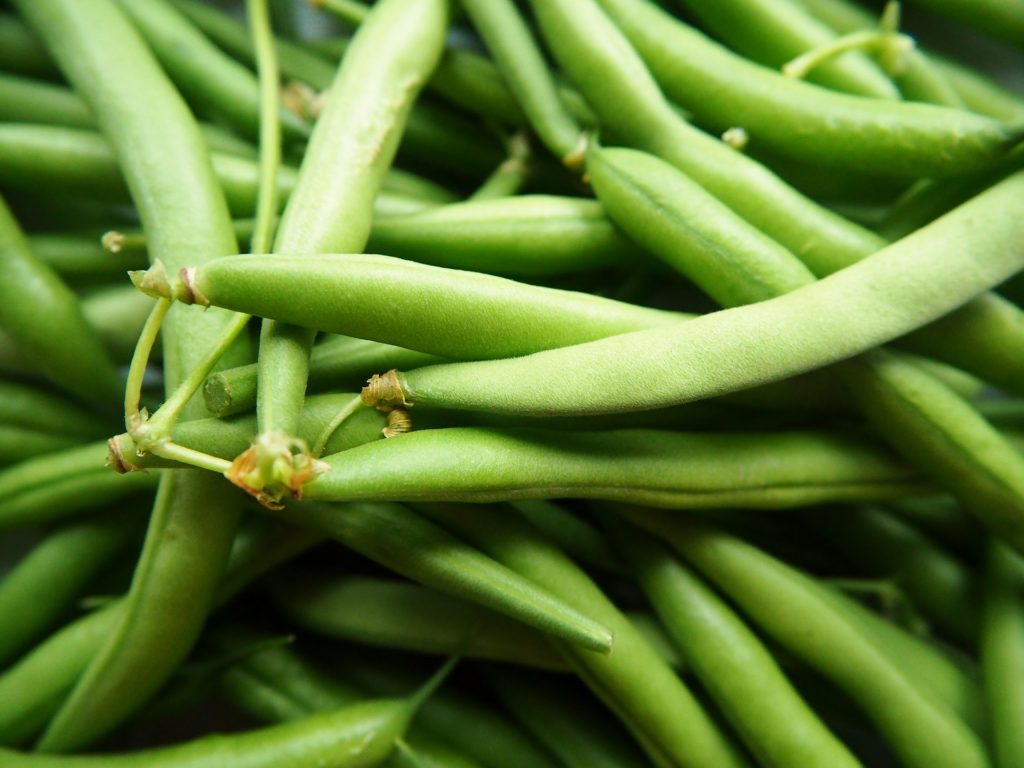
Beans are particularly advantageous companions for peppers because they fix nitrogen in the soil, enriching it and benefiting neighboring plants. This nitrogen enrichment is beneficial for the nutrient-heavy growth of peppers. Additionally, certain types of beans can serve as natural trellises for vining varieties of pepper, leading to a more efficient use of space in your garden.
Squash
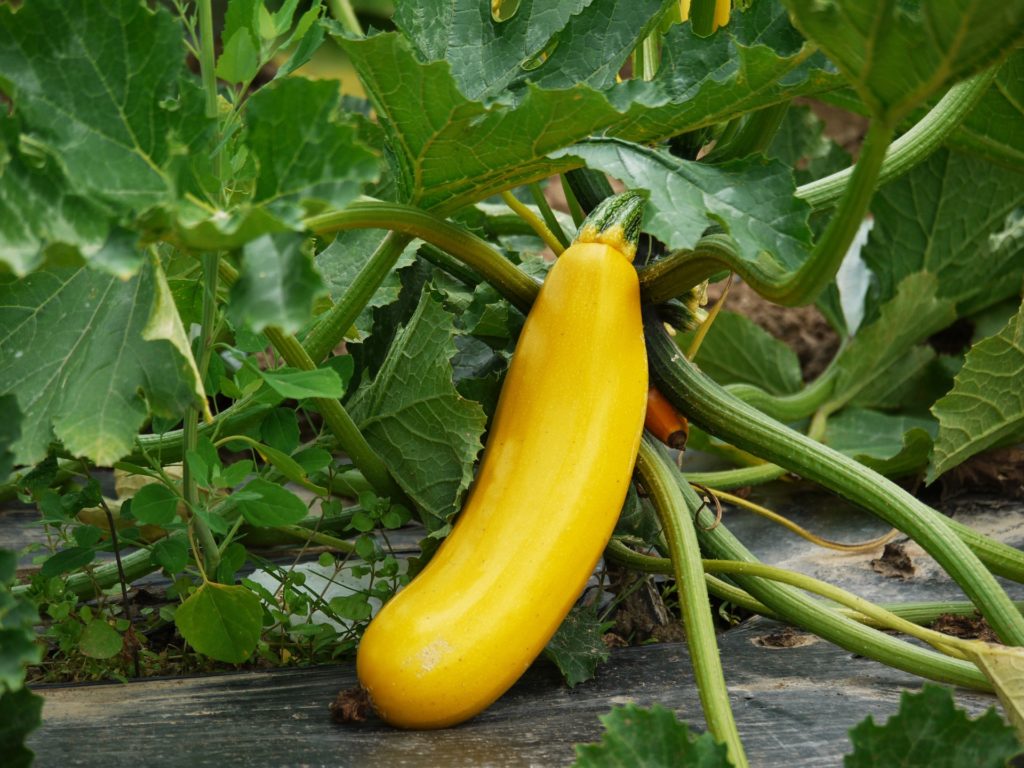
Squash plants can effectively spread out and cover the ground, helping to prevent weeds from competing with pepper plants for nutrients and moisture. The broad leaves of squash can also provide shade, reducing soil temperature and moisture loss. However, it’s essential to monitor the growth, as squash can spraw clumsily, potentially overshadowing pepper plants if not maintained properly.
Cucumbers
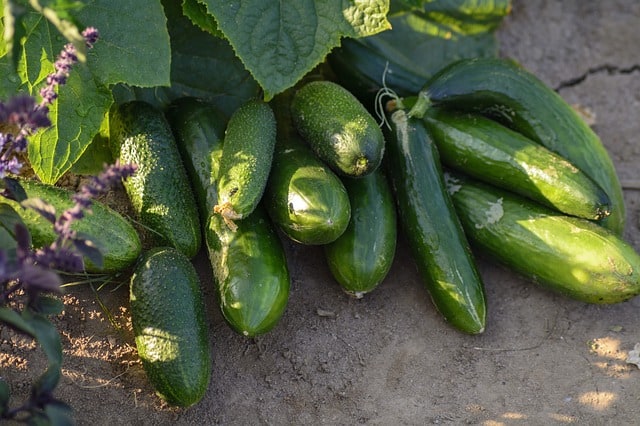
Cucumbers share similar watering and nutrient needs with peppers, making them a good companion. Their creeping vines can create a microclimate that helps peppers retain moisture during hot weather. Additionally, both plants can benefit from the same insect repellents, creating a more comprehensive pest management strategy. The combination may also lead to improved pollination for both plants, as they attract similar pollinators.
Peas
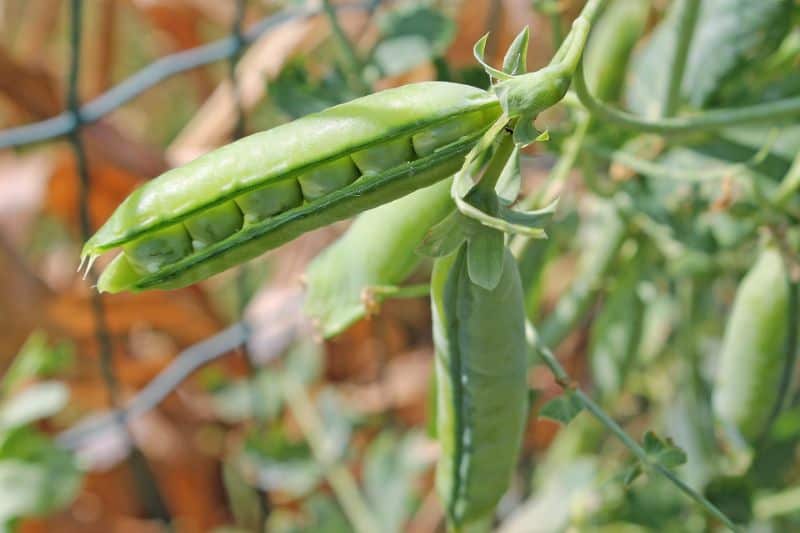
Growing peas alongside peppers can promote better humidity levels in the soil as peas contribute to ground cover. The growing vines of peas can also provide a vertical growth structure that can help shade peppers from the intense midday sun. The symbiotic relationship further aids in nitrogen fixation, ensuring that your pepper plants have all the nutrients they need for healthy growth.
Lettuce
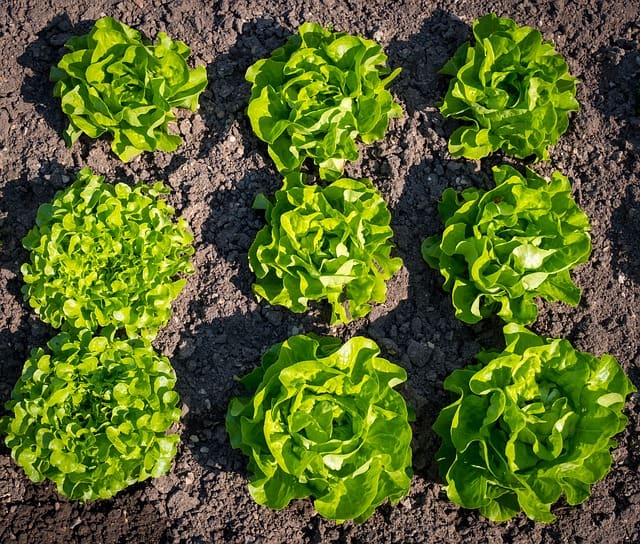
Lettuce grows well in the cooler weather of spring and fall, so planting it with peppers can optimize growing space. The fast growth rate of lettuce allows for quicker harvesting, after which peppers can take full advantage of the space without the competition. Additionally, the shallow roots of lettuce ensure that it won’t compete heavily with the peppers for nutrients.
Chard/ Spinach
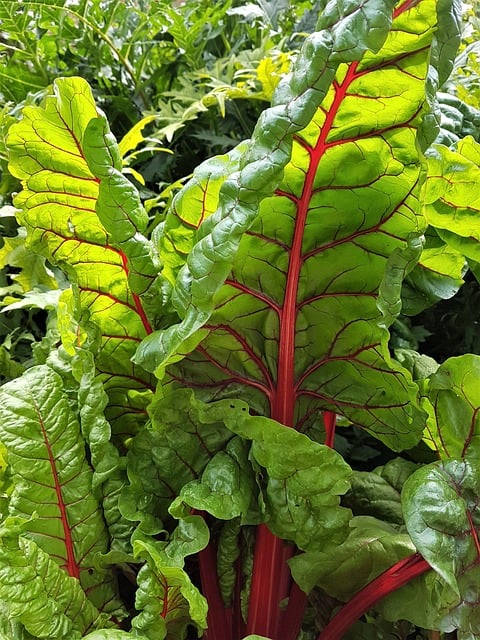
Similar to lettuce, chard and spinach can thrive alongside peppers as their shallow root systems allow for minimal competition. These leafy greens can help create a microclimate, keeping the soil cooler and more humid, which can be advantageous for young pepper plants. Moreover, harvesting these greens earlier in the season opens up space for peppers to expand as they grow.
Onions, Garlic and Other Alliums
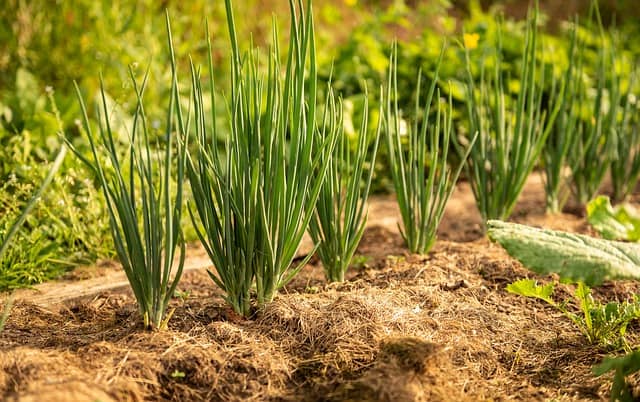
Alliums such as onions and garlic are excellent companions for peppers. Their strong scents can repel pests like aphids and spider mites, protecting pepper plants. Furthermore, alliums are known to deter certain soil-borne diseases. Planting them in proximity ensures that your peppers are not only protected from pests but also benefit from the improved soil structure as allium roots help aerate the ground.
Radishes
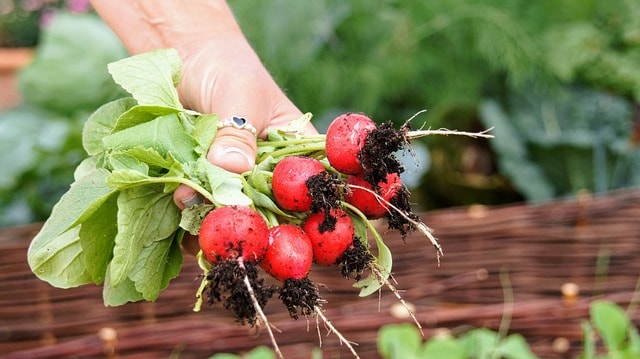
Radishes can be interplanted with peppers to benefit both crops. The quick-growing radishes will mature quickly, allowing for early harvests without overshadowing young pepper plants. Additionally, when radishes are allowed to mature, they can aid in breaking up compact soil and improve drainage, creating a healthier environment for pepper roots.
Carrots
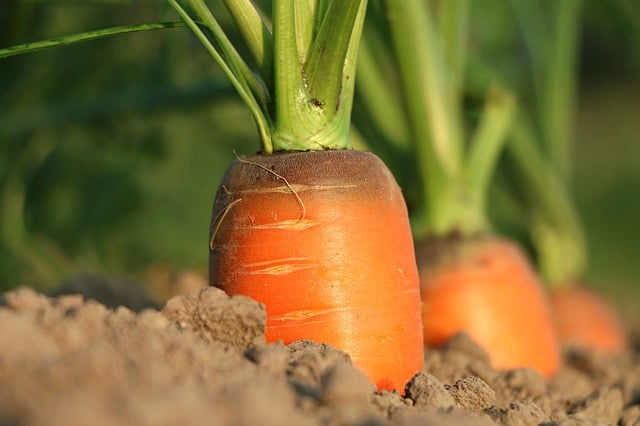
Carrots can thrive alongside peppers due to their complementary root depths – carrots grow deep, while pepper plants have less invasive roots. This prevents competition while maximizing your utilization of garden space. Furthermore, growing radishes between rows can mark spacing, while both crops benefit from the same watering and nutrient routines.
Beets, Parsnips and Other Root Crops
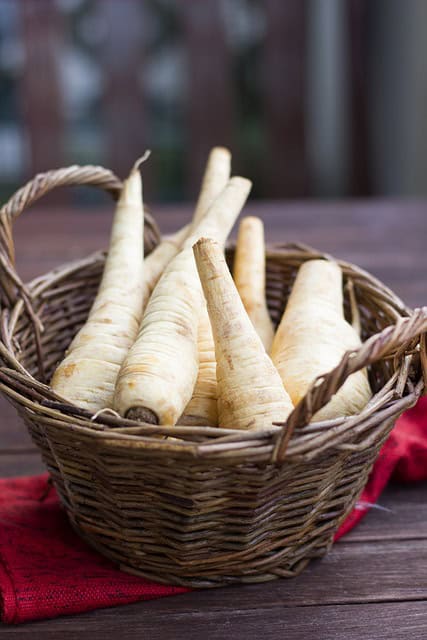
Root vegetables such as beets and parsnips can also be effectively grown alongside peppers. These plants require different soil depths, ensuring minimal competition. Furthermore, their foliage can provide some shade to underplanting pepper varieties, particularly during the hottest periods of growth. The diversity enhances the garden ecosystem, attracting a wider range of beneficial insects.
Asparagus
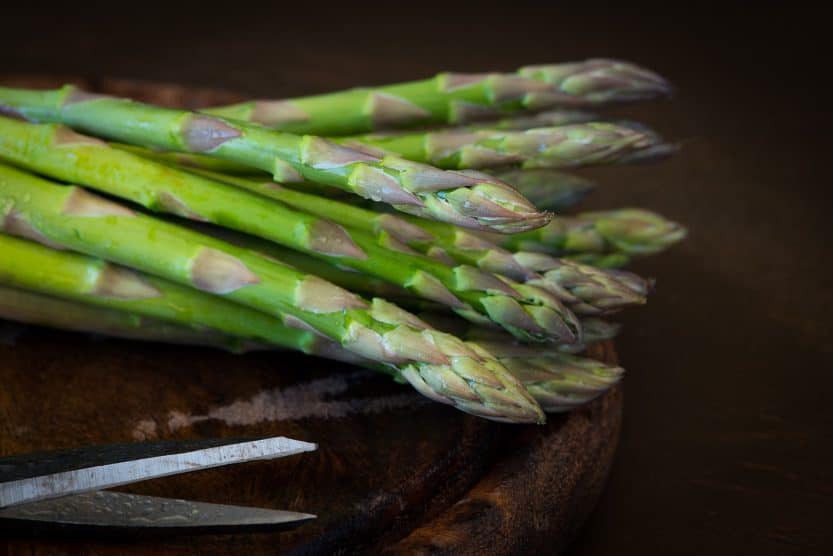
Asparagus, being a perennial vegetable, can be a long-term companion for peppers. Once the asparagus is established, it will grow year after year, providing a structured planting that allows peppers to thrive without much interference. The different growth cycles of asparagus and peppers mean they won’t compete for resources during peak growing periods, with asparagus’s early growth offering shade for young pepper plants.
Herbs That Make Good Companion Plants for Peppers
Basil
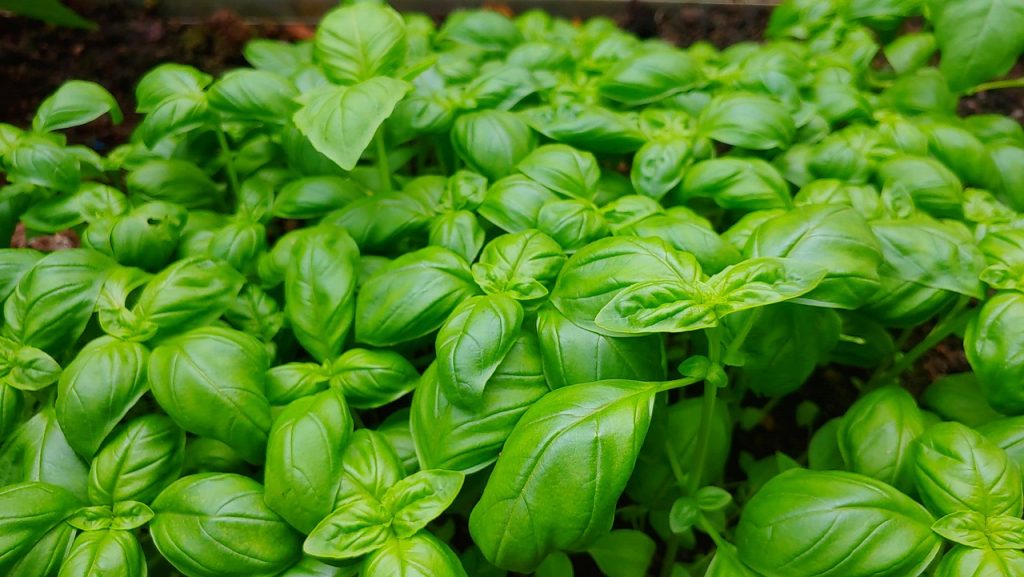
Basil is one of the most well-known herb companions for peppers. Not only do they thrive in similar conditions, but basil’s aromatic properties can repel common pests such as aphids and spider mites. Additionally, some studies suggest that basil can enhance the flavor of nearby pepper plants, making for a tastier harvest. Plus, the lush leaves of basil provide some ground cover, which can help retain soil moisture.
Oregano

Oregano, much like basil, is beneficial to pepper crops due to its ability to deter pests. This robust herb attracts beneficial pollinators and can provide a strong defense against common garden pests. Oregano can thrive under the same soil conditions as peppers and can serve as a ground cover, enriching the soil with its own nutrients as it grows.
Marjoram
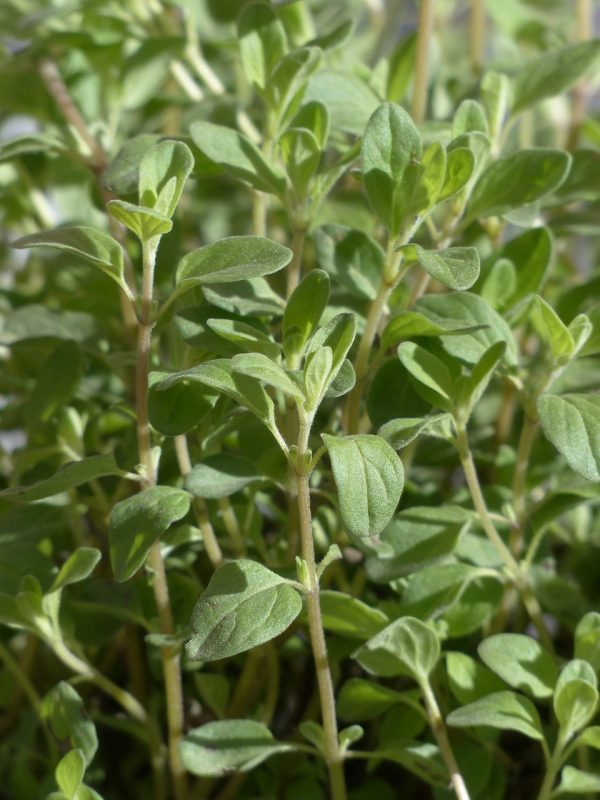
Marjoram has a subtle flavor that complements peppers, both in the garden and on the plate. This herb can help keep pests away, and its growth habit allows it to fill in spaces between pepper plants efficiently. Marjoram’s aromatic nature also contributes to an inviting environment that attracts beneficial insects, further enhancing the overall health of your garden.
Rosemary

Rosemary is an excellent companion herb that thrives in similar sunny conditions as peppers. Its woody structure provides vertical interest in your garden while also helping deter pests like cabbage moths and beetles. Rosemary’s fragrant scent can mask the smell of vulnerable pepper plants, further protecting them from pests that may forage on them.
Thyme

Thyme serves as a fantastic companion plant, attracted by its ground-covering qualities and its ability to attract pollinators. Its low-growing habit helps in suppressing weeds while its evergreen nature pairs well with the vibrant colors of pepper plants. Additionally, thyme’s nature as a pest repellent further enhances the garden ecosystem’s resilience against common pests.
Dill
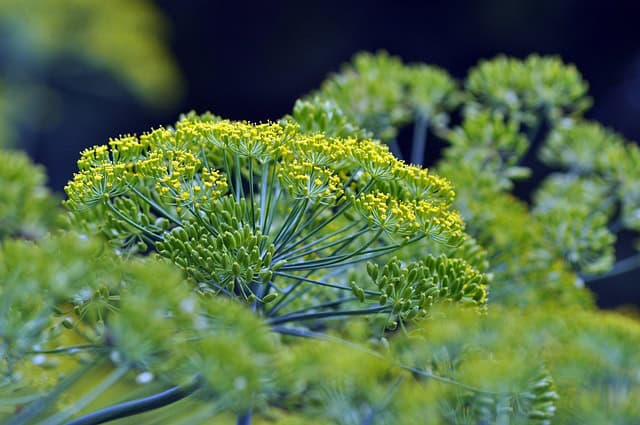
Dill’s tall, umbrella-like flowers attract many beneficial insects that prey on pests threatening pepper plants. They can enhance pollination and biodiversity in the garden. Dill is relatively low-maintenance and combines well with peppers, as their growing requirements align. However, it’s important to monitor dill, as its tendency to self-seed can lead to overcrowding if not managed properly.
Cilantro

Cilantro is a fantastic, fast-growing herb that can be interplanted with peppers. It helps attract beneficial insects and can bolster pest resistance. As cilantro tends to grow quickly, it can be harvested before the pepper plants grow too large, ensuring there’s no nutrient competition. Additionally, cilantro’s aromatic leaves can confuse flying pests that may threaten pepper plants.
Parsley
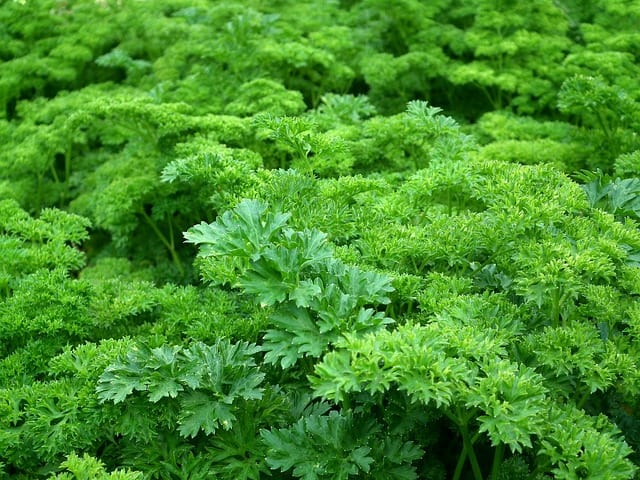
Parsley can help enhance the richness of the soil when grown next to pepper plants. As a companion, it attracts beneficial insects that can serve as natural pest control while providing a delightful green that adds diversity to your garden. Parsley has similar moisture needs, helping to create a mutually beneficial environment.
Lovage
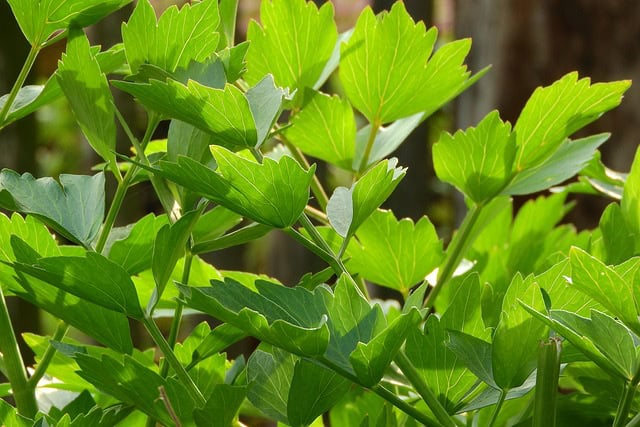
Lovage’s tall growth habit can offer some shade for peppers during the heat of summer, making it a beneficial companion plant. This herb has a strong flavor that enhances vegetable dishes, including those featuring peppers. It’s also known as a natural pest repellent, keeping spicy pepper varieties safe from invading pests such as aphids.
Hyssop
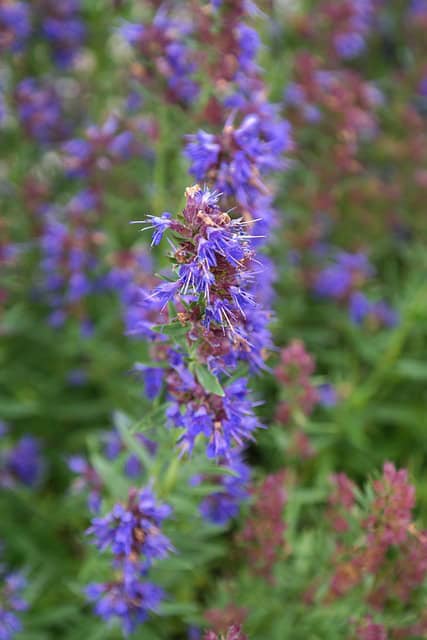
Hyssop brings a wealth of benefits when planted near peppers. This aromatic herb attracts honeybees and other pollinators, enhancing the overall health and yield of both species. Furthermore, hyssop has been known to improve the flavor of surrounding herbs and vegetables, including peppers, making it a win-win for culinary uses and garden aesthetics.
Bee-Balm
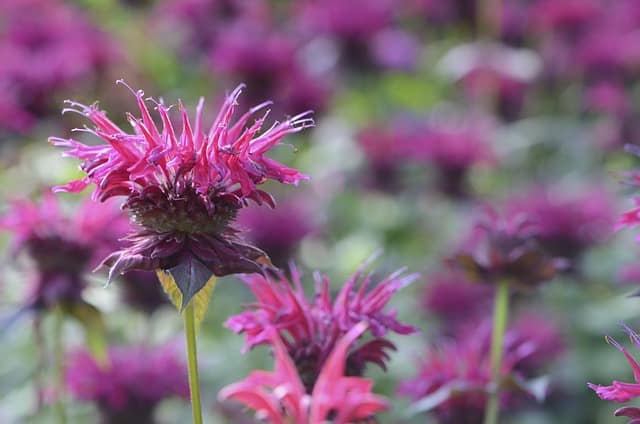
Bee-balm, with its vibrant flowers, attracts both pollinators and a variety of beneficial insects, enhancing the overall biodiversity of your garden. When planted near peppers, bee-balm can bring in predatory insects that target harmful pests. The plant also has aromatic qualities that can deter some insects known to affect peppers, simultaneously improving the landscape’s visual appeal.
Anise

Anise is another herb that works beautifully with peppers due to its ability to attract beneficial insects while warding off pests. Its distinct aroma can deter aphids, snails, and other common nuisances in the garden. Anise grows well in similar conditions to peppers, making it an easy pairing for producing a lush, productive garden space.
Flowers That Make Good Companion Plants for Peppers
Borage
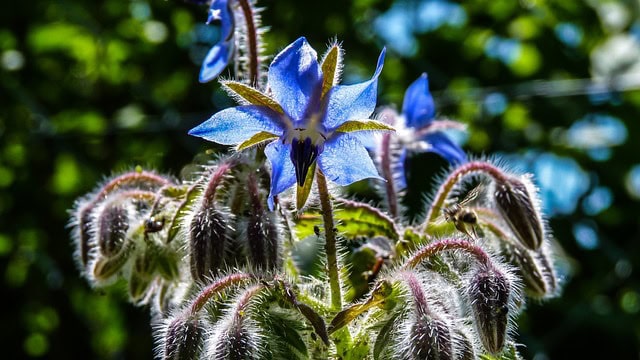
Borage is a flowering herb that offers numerous benefits to peppers. Its vibrant blue flowers attract pollinators, which are essential for pepper fruit development. Furthermore, borage is known to improve the growth and flavor of nearby plants. It also has the ability to bring nutrients, particularly potassium, from the soil to the surface, which can benefit pepper plants.
Marigolds
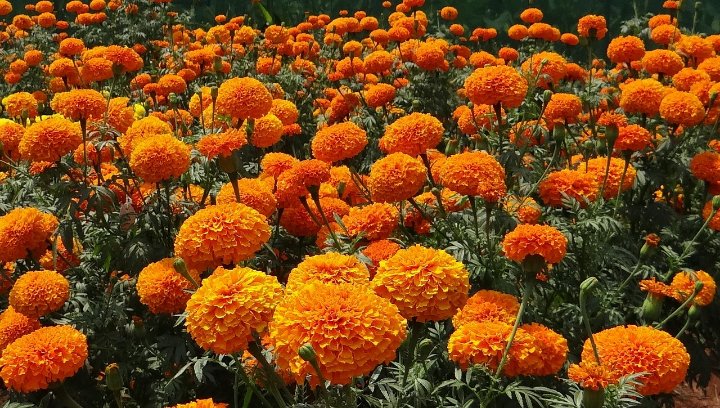
Marigolds are renowned for their pest-repelling properties, particularly against aphids and nematodes. Their vibrant blooms not only add color to your garden but also attract beneficial insects. For peppers, marigolds can act as a deterrent to harmful bugs, while also enhancing the overall health of the garden ecosystem. In addition, marigolds can improve soil health by adding organic matter when their leaves decay.
Nasturtiums
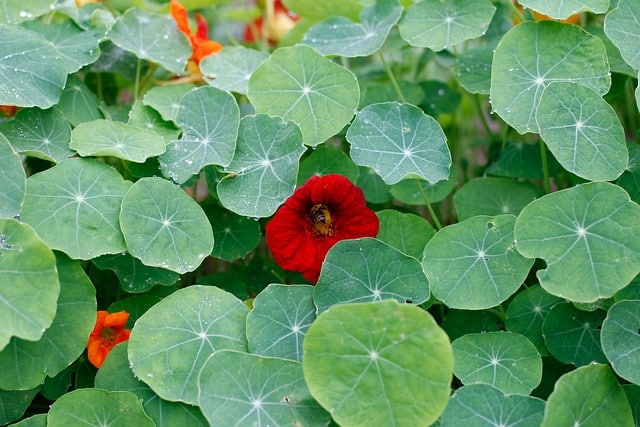
Nasturtiums are excellent companions for peppers as they attract aphids, keeping these pests away from the peppers themselves. They add a vibrant splash of color to the garden and have edible flowers and leaves, adding a peppery flavor to salads. Nasturtiums also improve soil quality by acting as a trap crop, diverting pests away from more vulnerable plants.
Calendula
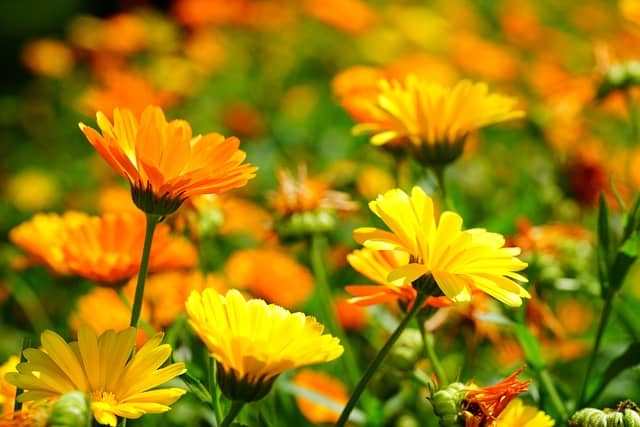 Calendula, or pot marigold, is another flower that pairs well with peppers. Its bright flowers attract beneficial insects while repelling certain pests. Additionally, calendula blooms throughout the growing season, providing continuous nectar sources for pollinators. The calendula plant can also enhance soil health through its ability to suppress disease-causing nematodes.
Calendula, or pot marigold, is another flower that pairs well with peppers. Its bright flowers attract beneficial insects while repelling certain pests. Additionally, calendula blooms throughout the growing season, providing continuous nectar sources for pollinators. The calendula plant can also enhance soil health through its ability to suppress disease-causing nematodes.
Petunias

Petunias are not only visually appealing but also serve as excellent companions for peppers. They help repel pests such as aphids and tomato hornworms. Their fragrant flowers attract pollinators, which benefit pepper plants during the flowering stage. Petunias are resilient and adaptable, making them an easy addition to any pepper garden.
Geraniums

Geraniums are a lovely companion plant, not only for their ornamental beauty but also for their ability to repel pests. They can serve as a barrier against whiteflies and beetles that might threaten your pepper crops. Their tough leaves and scents can confuse harmful insects, providing added protection to peppers cultivated nearby.
Dandelions
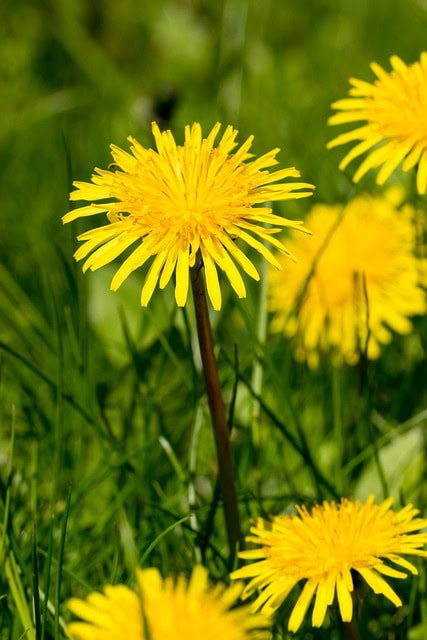
While often regarded as a weed, dandelions can be beneficial to pepper plants when managed correctly. They attract pollinators and beneficial insects that can help control pest populations. Additionally, dandelions help aerate the soil with their deep taproots, increasing moisture retention and enriching the soil with nutrients as they decompose.
Buckwheat
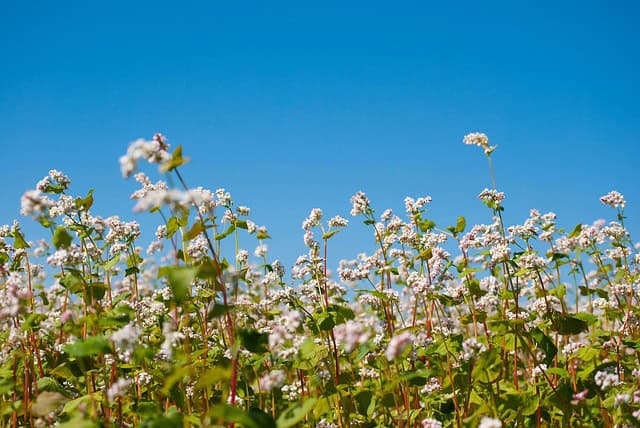
Buckwheat is a fast-growing cover crop that can be planted alongside peppers. It attracts beneficial insects, particularly predatory wasps and pollinators, enhancing overall garden biodiversity. Buckwheat also serves as a nutrient accumulator, drawing phosphorus and calcium from the soil and making it available for neighboring plants. After flowering, buckwheat can be cut down and left to decompose, adding organic matter to the soil.
Plants To Grow Nowhere Near Peppers
Potatoes
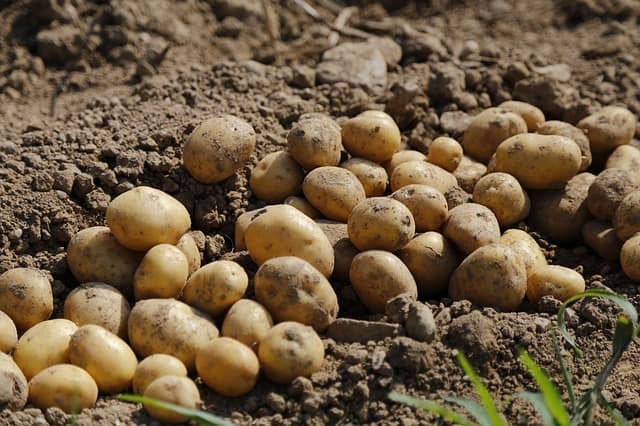
Potatoes and peppers belong to the same family, Solanaceae, and thus share many pests and diseases, including Colorado potato beetles and blights. Growing them in proximity can lead to increased disease susceptibility and competition for nutrients. Keeping these plants apart will help mitigate such risks and promote healthier growth for both.
Brassicas
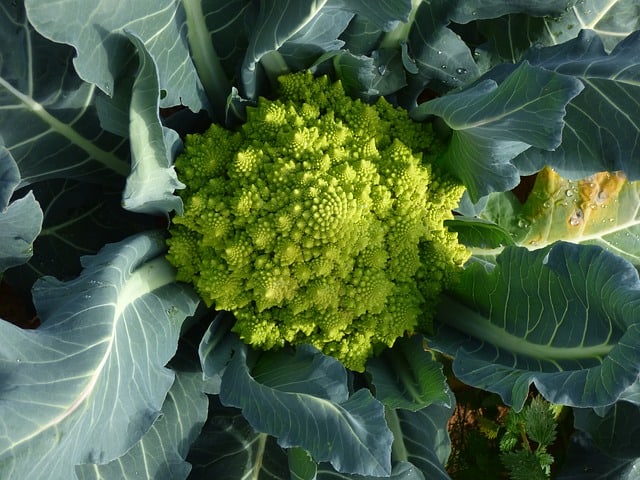
Brassicas include crops like cabbage, kale, and broccoli, which can compete severely with peppers for soil nutrients. Additionally, they attract pests such as cabbage worms that may also invade pepper plants. For the best results, it’s advisable to keep these two families of crops separated to ensure thriving plant health.
Fennel
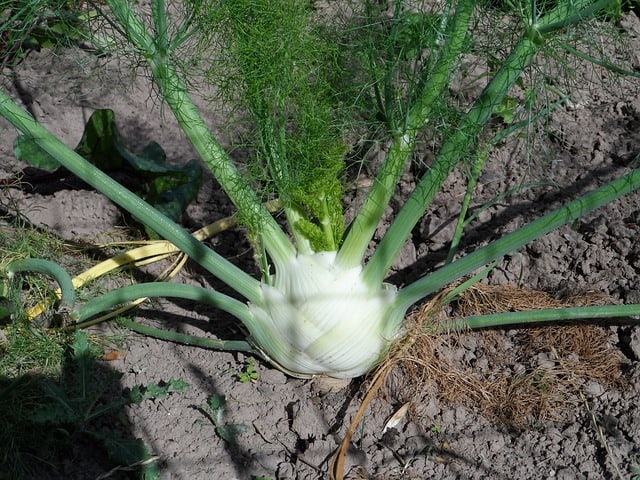
Fennel can have a detrimental impact on the growth of nearby plants, including peppers. It secretes substances that inhibit the germination and growth of many crops. If you want healthy pepper plants, it’s best to keep fennel at a distance, as it can hinder their development by competing for resources and nutrients.
Apricot Trees
 While not a direct crop competitor, planting apricot trees near pepper plants can lead to pest issues. Apricot trees attract certain insect pests that can then transfer to pepper plants, posing a risk to their health. Additionally, the shade from apricot trees can stunt the growth of sun-loving peppers, which thrive under full sun conditions.
While not a direct crop competitor, planting apricot trees near pepper plants can lead to pest issues. Apricot trees attract certain insect pests that can then transfer to pepper plants, posing a risk to their health. Additionally, the shade from apricot trees can stunt the growth of sun-loving peppers, which thrive under full sun conditions.


